- News
- Reviews
- Bikes
- Accessories
- Accessories - misc
- Computer mounts
- Bags
- Bar ends
- Bike bags & cases
- Bottle cages
- Bottles
- Cameras
- Car racks
- Child seats
- Computers
- Glasses
- GPS units
- Helmets
- Lights - front
- Lights - rear
- Lights - sets
- Locks
- Mirrors
- Mudguards
- Racks
- Pumps & CO2 inflators
- Puncture kits
- Reflectives
- Smart watches
- Stands and racks
- Trailers
- Clothing
- Components
- Bar tape & grips
- Bottom brackets
- Brake & gear cables
- Brake & STI levers
- Brake pads & spares
- Brakes
- Cassettes & freewheels
- Chains
- Chainsets & chainrings
- Derailleurs - front
- Derailleurs - rear
- Forks
- Gear levers & shifters
- Groupsets
- Handlebars & extensions
- Headsets
- Hubs
- Inner tubes
- Pedals
- Quick releases & skewers
- Saddles
- Seatposts
- Stems
- Wheels
- Tyres
- Health, fitness and nutrition
- Tools and workshop
- Miscellaneous
- Cross country mountain bikes
- Tubeless valves
- Buyers Guides
- Features
- Forum
- Recommends
- Podcast
review
£1,199.00
VERDICT:
Great quality indoor trainer with accurate power reporting and some unique features
Very powerful
Very quiet
Very responsive
Very accurate
ERG mode pretty brutal
Weight:
21,800g
Contact:
At road.cc every product is thoroughly tested for as long as it takes to get a proper insight into how well it works. Our reviewers are experienced cyclists that we trust to be objective. While we strive to ensure that opinions expressed are backed up by facts, reviews are by their nature an informed opinion, not a definitive verdict. We don't intentionally try to break anything (except locks) but we do try to look for weak points in any design. The overall score is not just an average of the other scores: it reflects both a product's function and value – with value determined by how a product compares with items of similar spec, quality, and price.
What the road.cc scores meanGood scores are more common than bad, because fortunately good products are more common than bad.
- Exceptional
- Excellent
- Very Good
- Good
- Quite good
- Average
- Not so good
- Poor
- Bad
- Appalling
The Tacx NEO 2T Smart is the next generation of what's already a well-regarded trainer. The new unit offers more powerful resistance at low speeds and is capable of very quick ERG power changes. It's quiet and capable, with accurate power numbers, and continues the trend of NEO trainers being excellent, although the ERG mode is a bit hardcore compared to some.
If you're unfamiliar with the Tacx NEO family of trainers, it's one of the benchmark direct drive trainers out there. Unlike its direct competitors – the Wahoo KICKR, the Saris H3 and the Elite Drivo, among others – it doesn't use a belt to drive the resistance unit from the cassette. The connection is direct, and the flywheel is virtual, rather than being a big block of metal that you spin up to speed.
> Find your nearest dealer here
Tacx claims the NEO 2T can simulate a flywheel up to 125kg, way above the physical flywheels on other units, and the design also allows the trainer to directly drive the rear wheel, so it'll keep up speed when you're resting on descents, ready to pick up your effort again at the bottom. It's also able to generate its own power, so if you like to take your trainer to warm up before races then you can get full interactivity with your favourite training app in the middle of a field if you want.
The trainer has two hinged feet that flip up for storage, and looks a bit like the Imperial shuttle that Darth Vader used to knock about in. It doesn't come with a cassette, so you'll need to factor in the cost of that, but other than that it's good to go, accepting all the axle standards you're likely to throw at it.
It's ANT+ and Bluetooth compatible for both reporting and for trainer control. It can simulate up to a 25% gradient and offers up to 2,200W of resistance at an accuracy of +/- 1%, which should be enough unless you've devised a way for both you and a friend to ride at once.
In terms of the look of the trainer, the only clue it's a NEO 2T and not a NEO 2 is a glossy racing stripe, and a T. The changes are internal, and mostly concerned with the strength and positioning of the magnets.
The NEO 2 is a great trainer, which could replicate pretty much anything. One thing it did struggle with though was hard sprints from low speed, where the resistance unit wasn't able to offer enough resistance, and you could induce some slip. The new trainer has more powerful magnets which are aligned differently, and those changes mean it's able to cope with those low-speed sprints much better.
It's not really something that I do a great deal of, but if you're into your sprints from a standstill then the NEO 2T will probably suit you better than its predecessor. For the rest of us, you're unlikely to notice that change, although you might notice the different feel of the ERG mode; more on that in a bit.
Setting up
Setting up the NEO 2T is simple enough, assuming you have a cassette. Fold the feet out, fit the cassette, make sure the end caps are the ones to fit your frame and lob your bike on top. It took me about 10 minutes from sealed box to being ready to go; you don't even need to plug it in if you don't want to, although you don't get the powered downhills if you don't. The power lead is nice and long if your power socket isn't ideally placed.
If you can't leave your trainer set up then it's easy enough to pack away too, and folds into a pretty compact unit. It's heavy and doesn't have a nice balanced handle like the Wahoo KICKR so it's a bit more of a struggle to move about, but it's not that much of a chore.
Linking the NEO 2T to a variety of training apps using both Bluetooth and ANT+ didn't present any issues: everything worked first time.
Once you start riding you'll probably notice that the NEO 2T is very quiet. All direct drive trainers are these days, and the NEO 2T is as quiet as any. Certainly it's not as noisy as my bike's transmission, and nowhere near as noisy as my fan. The motor is well balanced, so there's not much vibration through sprung floors or into your neighbour's flat below. As with all the NEO trainers you get the natty mood light that shines on the floor and gets angrier in colour the harder you go.
The NEO 2T resistance unit, like its predecessors, is capable of replicating road conditions. So if you're on Zwift and riding across a wooden bridge you'll feel the thunk-thunk-thunk of the planks underneath your wheels. It's very clever and not by any means essential, but it does add a layer of realism to the ride that you don't get with other trainers.
Power: repeatable and believable
The NEO 2T's resistance unit isn't exactly the same as the NEO 2, but it's a similar beast, and it has the same characteristics. Those characteristics are: it's very good at giving repeatable numbers that you can trust to be pretty close to what you're actually putting out, and generally it reads at the lower end of what I'd expect from my legs, given a few years of trying all sorts of trainers and power meters.
Here's a plot of the power from a Zwift race I did, with the NEO 2T plotted against my Garmin Vector 2 pedals, which I've used to benchmark loads of trainers over the years and I'm confident are pretty accurate.
You can see that the average power numbers are about 2.5% apart, comparing power measured at the pedals with power measured at the rear wheel. Given that there are losses associated with getting the power from the pedal to the rear wheel, you'd expect the NEO 2T to register slightly lower numbers, and it does.
It's also noticeable that the two lines are closer at the start of the race, and less so the further through you go. I'm not sure what caused that in this instance: I'd already completed a 20-minute warm up, so both pedals and trainer were up to speed. I suspect it's my form on the bike suffering and that being reflected in the plots. I tend to mash the pedals a bit more when I'm tired, so maybe the Garmins were thinking there was more in the tank than there actually was, or maybe the NEO 2T was under-representing the fluctuating power a bit. Or a combination of both.
The graph above is that warm up, a 20-minute set of stepped intervals. You can see that again, the two lines match each other very closely, with the average power only about 1% different between the two.
Let's zoom in on one of those intervals though...
This is a ramped interval that goes from about 350W to about 400W over a minute. You can see at the start that there's a peak well over 400W before it settles into the interval. This is something you often see on intervals when a trainer is in ERG mode: the trainer/app combination adds a bit too much resistance at the start of the interval and needs to slack it off a bit to get to the correct level. The redesigned internals of the NEO 2T make it capable of making big resistance changes almost instantaneously, and that's what it does in ERG intervals. It's pretty brutal: as soon as you hit the interval it's just a wall of resistance, and you have to really push to get the interval going, which also contributes to the power peaking.
Compare that to this trace of a set of intervals from the Elite Suito trainer. The pickup of resistance on the Elite isn't as quick as the NEO 2T, and the result is that you work into the interval a bit more gradually, which is a lot gentler on the legs. It's not like one approach is right and one wrong, but I prefer the feel of the Suito here, even though it's not quite as good at holding power at a set level. The NEO 2T does that much better, but some intervals – for example, the sprint intervals at 300% FTP on the Jon's Mix session in Zwift – are almost impossible: it's like cycling into a brick wall.
> How to get started with Zwift
The work that Tacx has done on the resistance unit should mean that it's capable of doing pretty much anything, but at the moment it feels a bit like it's turned up to 10. It needs to be backed off a notch, or maybe user-configurable for feel. Some people might like the current feel.
The flip side of that is that if you're riding around in Zwift then the gradient changes in the game are more quickly and accurately represented. On the Suito, for example, if you're riding the rollers at the start of Titan's Grove then it can sometimes feel like the climbs on the trainer are lagging behind what you're seeing on the screen a bit, and that's never a problem with the NEO 2T: as soon as you see the gradient tick up you can feel the hill kick in.
The NEO 2T measures cadence using a passive sensing system, and it does a bang-up job. The two traces of the trainer and the pedals here – which of course can directly measure the cadence so should be spot on – are mostly indistinguishable, and the average is almost exactly the same. Certainly it's as good as you'd ever need it to be, and much better than the Saris H3, for example, which uses algorithmic detection and isn't as good.
Overall: another top quality NEO trainer
There are lots of great direct drive trainers out there and the NEO 2T is certainly up there with the best of them in terms of build quality, power accuracy and ride feel. At £1,199 the NEO 2T is priced above what I'd consider to be its direct competitors. The Wahoo KICKR and Elite Drivo 2 are both a penny under a grand, and the Saris H3 has dropped to £849 RRP.
> Buyer’s Guide: 14 of the best turbo trainers
If you're not going to be spending a lot of your time doing sprints from a standstill then it's also worth looking for an older NEO 2 unit at a discount; you'll probably not notice the difference between the two, and you might save yourself a few quid. I prefer the feel of that older unit in ERG mode as well, although I expect subsequent firmware updates to the NEO 2T will address that, or (hopefully) allow users to tune the feel to their preference.
If you're looking for a top-end indoor trainer – and can find one, there aren't many for sale out there right now – then it's easy to recommend, as are its competitors. At that top level I'd say the Saris H3 is the best value right now, and the NEO 2T – with its better cadence sensing, road feel and the ability to power itself – is probably the pick in terms of features. Whether the extras are worth the £350 hike will depend on how much you value them, and what you'll be doing with the trainer.
Note: The Tacx Neo 2 Special Edition is currently discounted to £699.99 at Wiggle.
Verdict
Great quality indoor trainer with accurate power reporting and some unique features
road.cc test report
Make and model: Tacx Neo 2T Smart trainer
Size tested: One
Tell us what the product is for and who it's aimed at. What do the manufacturers say about it? How does that compare to your own feelings about it?
Tacx says, "The iconic, progressive and popular NEO 2 Smart is optimized into an even quieter and more powerful Smart direct drive. The motor is redesigned in order to provide a better indoor cycling experience and ride feel, especially during climbs and sprints. The NEO 2T Smart is more silent then ever thought possible and without question the most powerful, realistic and accurate bike trainer to date."
Tell us some more about the technical aspects of the product?
From the Tacx website:
By redesigning the magnets, we significantly improved the stillness of the NEO 2T. The noise coming from internal air displacements is reduced as well as vibrations noticed at a low cadence, that were being transferred to the floor. Resulting in a more silent Smart trainer then ever thought possible.
The new motor design of the NEO 2T also improves the ride feel during a climb or acceleration. We were able to give the motor of the NEO 2T more power, resulting in the ability to generate higher resistance levels under specific conditions, like in a sprint or at low speeds.
The NEO 2 was already equipped with a capacitive left and right detection sensor that accurately measures the exact position of both your legs. By adding standard ANT+ Cycling dynamics, you can now analyse your pedal stroke via the software of third parties; for example on a Garmin Edge bike computer.
The Tacx NEO 2T Smart measures your power with incredible precision, making sure that your data is accurate and reliable. This Smart trainers is the only trainers that doesn't require calibration process. This Smart trainer measures your power accurately within 1%.
The NEO 2T Smart is very responsive and reacts instantly to speed or incline changes. It also features Dynamic inertia which it compensates for weight, speed and angle of inclination to ensure the most realistic and smooth ride feel possible.
Rate the product for quality of construction:
9/10
Rate the product for performance:
9/10
Rate the product for durability:
9/10
Rate the product for weight (if applicable)
8/10
Rate the product for comfort (if applicable)
8/10
Rate the product for value:
6/10
The most expensive of the main pack of top-end direct drive trainers, but it has some features that set it apart from the others.
Tell us how the product performed overall when used for its designed purpose
Very well: responsive, accurate, fully featured.
Tell us what you particularly liked about the product
It's accurate, well made, quiet and responsive.
Tell us what you particularly disliked about the product
ERG mode is a bit harsh.
How does the price compare to that of similar products in the market, including ones recently tested on road.cc?
It's the most expensive of the main pack. The Saris H3 is down to £849 now, and the Wahoo KICKR and Elite Drivo 2 are a grand.
Did you enjoy using the product? Yes
Would you consider buying the product? Yes
Would you recommend the product to a friend? Yes
Use this box to explain your overall score
This is still a benchmark trainer, and has some features that set it apart from the others: the ability to replicate road feel and the ability to run on its own power, as well as accurate cadence sensing. I think there's a bit of work to be done on ERG mode through firmware updates, but even then it's an exceptional bit of kit, even if it is more expensive than its direct rivals.
About the tester
Age: 47
I usually ride: whatever I'm testing... My best bike is: Kinesis Tripster ATR, Merida Scultura, Dward Design fixed
I've been riding for: Over 20 years I ride: Every day I would class myself as: Experienced
I regularly do the following types of riding: road racing, time trialling, cyclo cross, commuting, touring, club rides, sportives, general fitness riding, fixed/singlespeed, mtb, Mountain Bike Bog Snorkelling, track
Dave is a founding father of road.cc, having previously worked on Cycling Plus and What Mountain Bike magazines back in the day. He also writes about e-bikes for our sister publication ebiketips. He's won three mountain bike bog snorkelling World Championships, and races at the back of the third cats.
Latest Comments
- DanaColby85 2 sec ago
I come very much from a cycle-touring perspective. Look under 'Touring' on many retail websites now and you only get gravel bikes, which to me are...
- mark1a 17 min 58 sec ago
I take a different view in that hookless rims serve no purpose other than to be made more cheaply for an equivalent weight allowing the...
- Legin 32 min 21 sec ago
He could always run the event and not mitigate the risks. Then if there is an incident that results in somone suing for compensation he can sell...
- David9694 2 hours 40 min ago
Double yellow lines to be reintroduced around Faversham Guildhall and Market Place to ‘protect’ views of town’s historic landmarks and character...
- Miller 12 hours 52 sec ago
Well, there's lifetime bans and there's lifetime bans. Banning an 88 year old don't impress me much.
- Gkam84 15 hours 6 min ago
I think that is why blind eyes have been turned in the UK, internationally aswell, with things like the Redhook crits, there were many licensed...
- mdavidford 16 hours 15 min ago
Ahem - other esporters(?) might be rather surprised to hear that the UCI has taken over their events - I think that would be the Cycling Esports...
- Bungle_52 16 hours 24 min ago
I wonder how he got to the game?
- OldRidgeback 16 hours 26 min ago
You'd need some good wet weather gear for that ride too.
- OnYerBike 18 hours 50 min ago
It seems to me that the most likely explanation is that whoever provided that quote fails to grasp the difference between a "public right of way"...














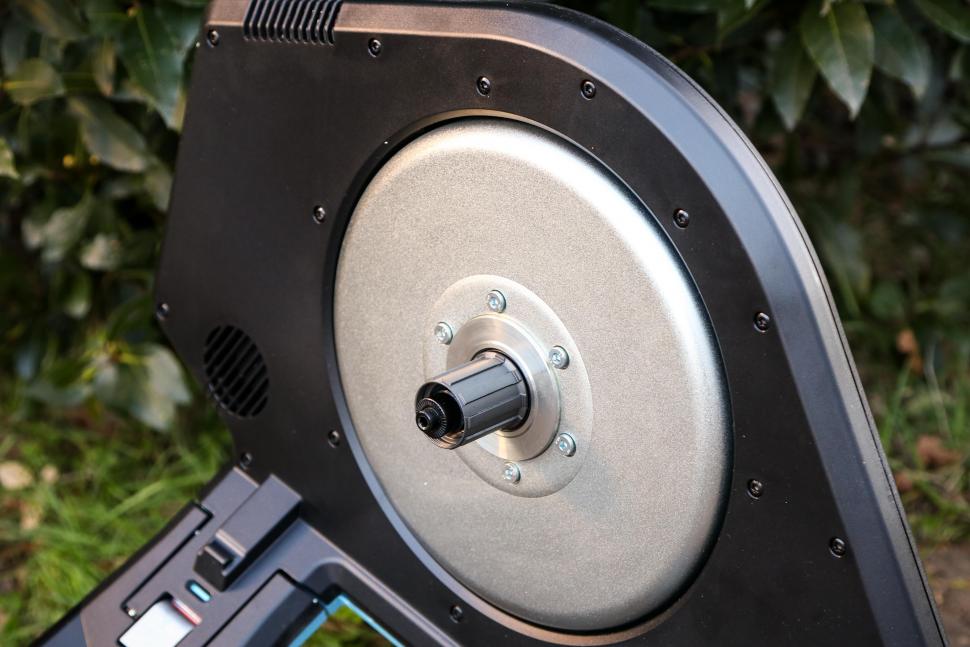

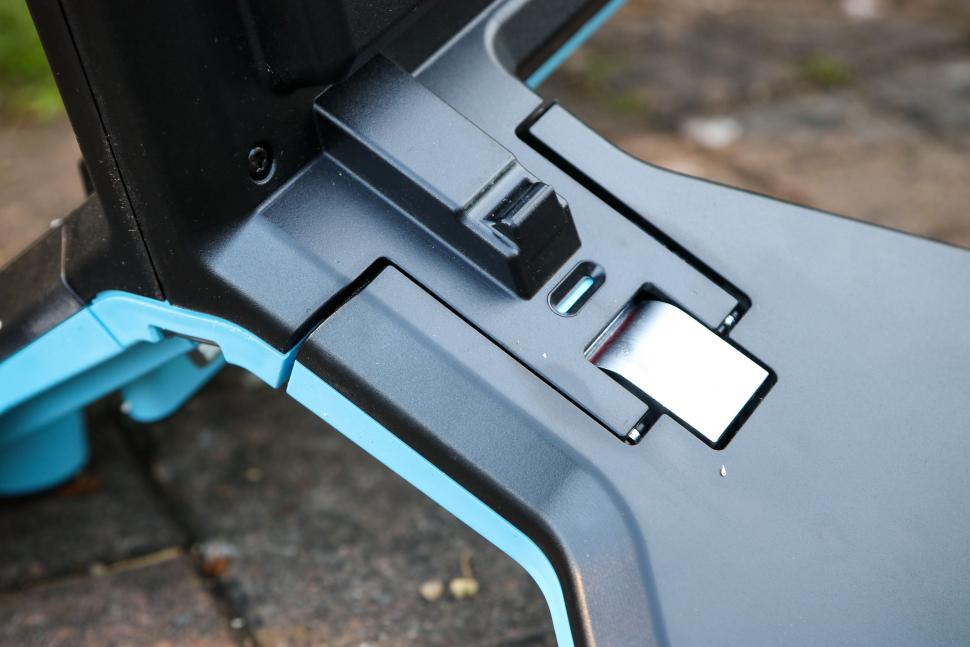



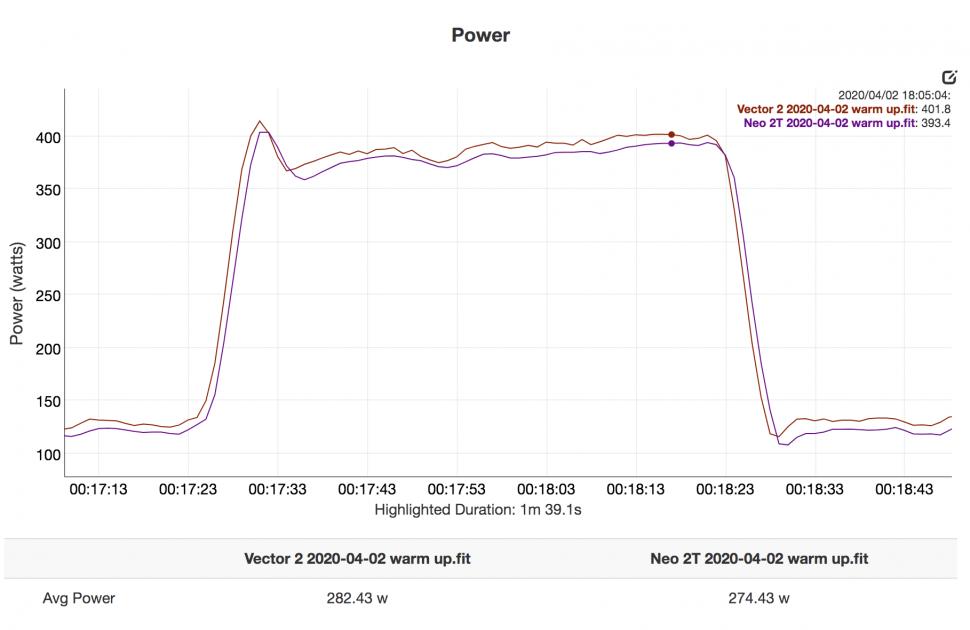


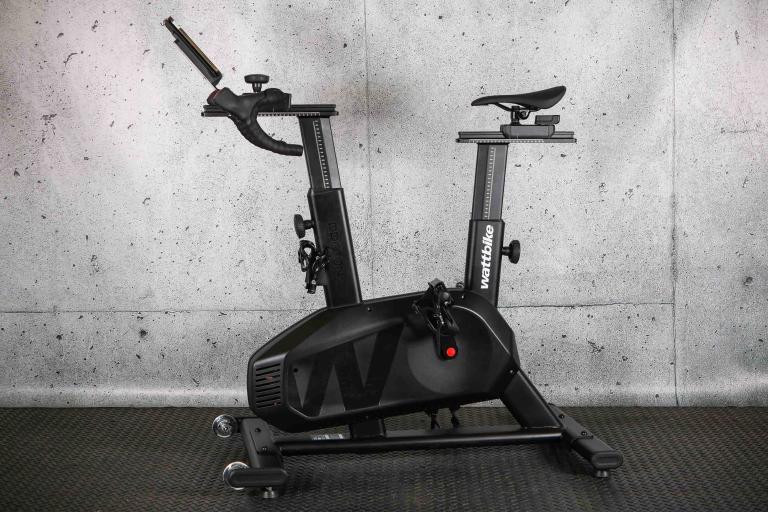
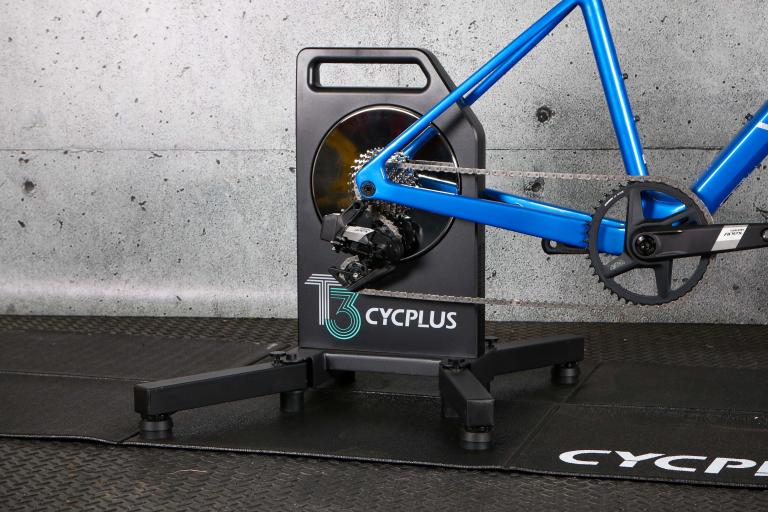
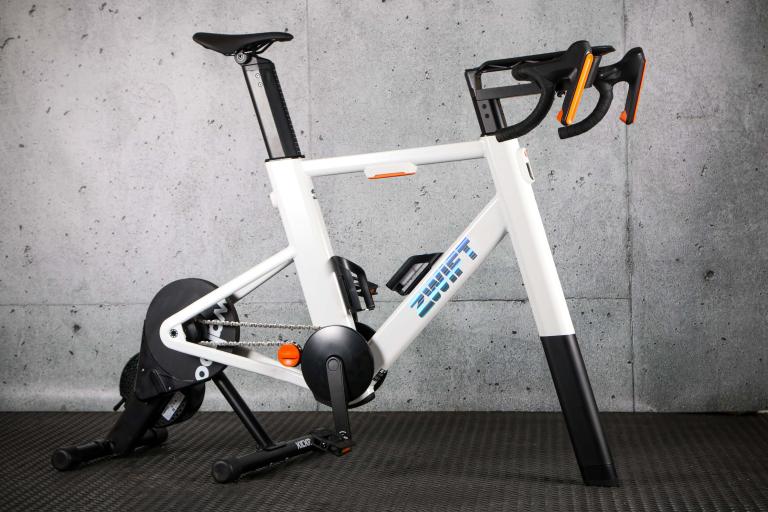

Add new comment
12 comments
What snowflakes complaining about a caliper that can easily be loosened to accommodate the trainer. It takes very little time to loosen and refit if you take your bike outdoors
I think any review that refers to the quality of the Neo 2T should at least mention the horrendous reliability of the Neo 2 and growing evidence of similar issues with the 2T.
I think any comment saying that the Neo 2 has horrendous reliability should provide evidence or else it can just be written off as an anecdote.
My personal anecdote is that I've an original Neo since 2016 and it still works absolutely perfectly despite being used regularly and never being serviced.
I think it's a great bit of kit and if it did break I would immediately replace it with whatever the current model is.
Had my Neo for years - use with VeloReality through the winter. No probs at all.
All good except 2T is absolutely incompatible with disc brakes.
Except that you can get a 5mm spacer to fit inbetween the unit and the caliper such that it does not rub. If you contact their support or join the group on Facebook, you'll find out what the part number is required (someone did mention that they come with it).
There should be a 5mm spacer for Boost spacing that comes with it, and Tacx can also supply a narrower one. This isn't an issue with all bikes with disc brakes - it's a bit shit but far from "absolutely incompatible".
First: spacer is 2.7 mm. Second: it's not works because caliper body still rubs trainer housing. Third: rear spacing with spacer becomes 144.7 mm in my case of 142 O.L.D. It's a lot of discrepancy. I really don't know what’s wrong with Tacx and what specifically may be unclear in the standard "142 mm".
2.7mm, thanks - that'll be narrower than the Boost spacer then, as mentioned.
I didn't say it worked for you, I said that it's not a problem for all disc braked bikes (with or without the extra spacer) and that it's not "absolutely incompatible" - which it isn't.
Not sure what the last bit is about - if they're bodging it with another spacer then standards aren't the issue.
I have a cannondale carbon synapse disc 2018 and it works fine with the supplied adaptor for 12mm through axle, with around 5mm gap between body and bike. Tried to take a picture to show the caliper, but not an issue for this bike at least with flat mount disc brakes. I also had to use a supplied spacer next to the cassette for a standard shimano 11 speed, but all as per instructions, no issues.
Do bikes with disc brakes need their rear calipers removing to fit? *
* The original Neo (nice as it is) does and it's a pita .
Still PITA. This was reason why I replaced my Neo 2T with Wahoo KICKR 2018.